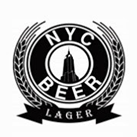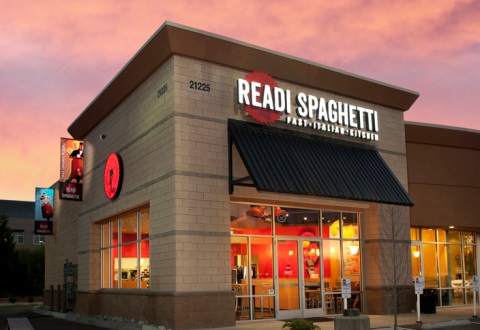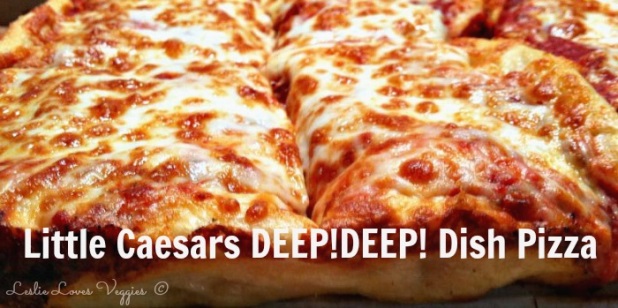Food & Beverage Industries Update
We are pleased to send you this review of cases and legal issues from the past year that we believe are interesting and instructive for members of the Food & Beverage Industries.
Trademark disputes about very different products
1. Ice cream and cough medicine
The owner of MINI MELTS for ice cream filed an opposition before the Trademark Trial and Appeal Board (TTAB) against an application to register MINIMELTS and MINI-MELTS for an expectorant pharmaceutical product. Based on these facts alone, how would you decide?


The TTAB proceeding was stayed for about 4.5 years pending the outcome of a preexisting civil infringement action between the same parties in the U.S. District Court for the Eastern District of Texas. In a jury trial, the applicant won the case. The Court held that there was no infringement, no unfair competition and no dilution. This decision was affirmed by the U.S. Court of Appeals for the Fifth Circuit, and the U.S. Supreme Court refused to consider the appeal.
The TTAB case resumed, and the TTAB found that the claims and issues before it were different from those in the Court case. The Court had dealt with applicant’s use of CHILDREN’S MUCINEX MINI-MELTS, not the right to use and register MINIMELTS or MINI-MELTS alone, which were the marks before the Board.
The opposer argued that the TTAB case presented a safety issue in that a child seeing the same mark on ice cream and on a pharmaceutical box would assume the drug is also an edible treat. The TTAB refused to consider this issue, as safety concerns are not within its purview.
Despite its more limited focus, the TTAB’s analysis was simple: The marks were essentially identical but the goods were very different and were sold in different channels of commerce. Parents, who would make the purchasing decision, would not buy a pharmaceutical on impulse. The opposer’s mark was relatively weak for food products, having been used by several other parties. The opposer’s mark also might be descriptive of its product, and there was no convincing proof that its mark had acquired secondary meaning as a source indicator. There had been no known actual confusion despite contemporaneous use of the marks for eight years.
Accordingly, considering these factors, the TTAB ruled in applicant’s favor and dismissed the opposition, finding that there would be no likelihood of confusion as to the source of these distinctly different goods. You probably decided the same way without years of deliberation. Mini Melts Inc. v Reckitt Benckiser LLC, 118 USPQ2d 1464 (TTAB 2016).
2. Butter and fishing tackle
James Hugunin began to manufacture and sell fishing tackle in northeastern Wisconsin which is dotted with lakes. Starting in 1997, he sold his tackle to retailers in a number of states under the trademark LAND O LAKES, which he registered as a trademark.
In the adjoining state of Minnesota, sometimes called the “Land of 10,000 Lakes,” there is a large well-known agricultural cooperative that has been selling butter and other dairy products under the LAND O LAKES mark since the 1920s. The year Hugunin began selling his fishing tackle, the dairy company became the official sponsor of a sport-fishing tournament and began advertising its dairy products in fishing magazines, although it did not make or sell any fishing gear.


Hugunin claimed to have difficulty attracting investors who feared that the dairy company would sue, so he filed a preemptive suit for trademark infringement in the U.S. District Court for the Northern District of Illinois, Eastern Division, and the dairy company counterclaimed for dilution. The Court granted summary judgment to the dairy dismissing the infringement claim, and it dismissed the dilution counterclaim on the ground of laches. Both sides appealed.
The Seventh Circuit was puzzled that either party was concerned about the other—the products of the two companies were too different, both marks were derived from geographic catchphrases, and the disparity in size between the contenders was enormous—annual sales of over $4 billion vs. less than $30,000. It was not even likely that consumers would think the dairy made Hugunin’s fishing tackle—so called reverse confusion.
The appellate judge, Judge Richard Posner, wrote: “But just as no one watching a NASCAR race and seeing a racing car emblazoned with Budweiser’s logo would think that the beer company had entered the automobile industry, so no one reading the ‘Walleye Pro’ ad or seeing a boat sponsored by the dairy company would think that the advertiser sells fishing tackle. . . .So in this unusual case two firms sued each other though neither had been, is, or is likely to be harmed in the slightest by the other. The suit was rightly dismissed.” Hugunin v. Land O’Lakes Inc., 815 F.3d 1064 (7th Cir. 2016).
3. Beer and building image
The owner and operator of our client, the Empire State Building, has several federal design mark registrations of images of its building for real estate management and other goods and services. An individual named Michael Liang filed an intent to use application to register a logo that incorporated one of the images used by the Building, as a trademark for beer and related goods. Our client opposed the application on the ground, among others, that it would dilute the distinctiveness of our client’s mark.


Registered Mark Applied-for Mark
The TTAB held that the Empire State Building’s image was a famous mark that would be likely to be diluted by the applicant’s mark, even though our client had not used or licensed its mark specifically for beer.
This result may seem predictable for the Empire State Building, but this was a unique case with voluminous evidence proving that the Empire State Building’s image qualified as a famous mark. Of course, prior results do not guarantee a similar outcome. If a hotel, restaurant or other hospitality company wants to expand the use of its name or décor to other categories (like clothing, jewelry, furniture or bedding) it might not enjoy the same degree of fame. Therefore, it would be prudent for it to have a trademark attorney conduct a trademark search to determine that the mark is available for such use and registration. Similarly, a hotel or restaurant should not assume that it can stop other companies from using its image or name for unrelated products or services unless it can show that its image or name has become famous to the general public. ESRT Empire State Building, L.L.C. v. Michael Liang, Opposition No. 91204122 (TTAB 2016).
Technical issues affecting trademark applications
1. What constitutes “use in commerce”?
Before the filing date of a use-based service mark application, the mark must be used on services rendered in “commerce.” “Commerce” is defined as “all commerce which may lawfully be regulated by Congress.”
A user of FLATIZZA for flat sandwiches at its Subway restaurants opposed an application to register the identical mark for pizza. At the time the application was filed, the applicant operated its Readi Spagetti restaurant in Bothell, Washington. Opposer claimed that the applicant’s operation of only one restaurant at a single location was purely intrastate so the application was void from the beginning.


The applicant had used FLATIZZA in a business plan, as a menu item on mock-up menus, and on a website before it opened its first restaurant. But the applicant had not shown that its services were provided to any out-of-state customers, were listed in any travel or restaurant guide, or had been advertised at all. Nor had it shown that its services affected interstate commerce. The TTAB rejected the applicant’s evidence of advertising on the Internet, Facebook and Twitter, since there was no evidence that its patrons ever wrote a review or became a fan or follower in social media. Further, it was speculation to assume that out-of-state travelers would go three miles off the Interstate Highway to patronize applicant’s restaurant.
Therefore, the opposition was sustained because of applicant’s insufficient evidence of interstate services. The opposer then sought a registration of it FLATIZZA mark for the entire United States except for the counties in Washington State where applicant actually had used its mark. This is being decided by the TTAB in a separate concurrent proceeding. Doctor’s Associates Inc. v. Janco, LLC, Opposition No. 91217243 (TTAB 2016).
Editor’s Note: Contrast the foregoing case with (1) Katzenbach v. McClung, 379 U.S. 294 (1964), in which the U.S. Supreme Court found that a local restaurant that was not frequented by interstate travelers was in “interstate commerce” since it received about $70,000 of food from out of state; and (2) the recent decision in Christian Faith Fellowship Church v. Adidas AG, 841 F.3d 986 (Fed. Cir. 2016), in which the U.S. Court of Appeals for the Federal Circuit reversed the TTAB and held that the sale of two hats displaying the mark ADD A ZERO to one out-of-state resident who paid about $38 as part of a fundraising campaign was sufficient to defeat an attempt to cancel a registration on the ground that the mark was not in use in commerce.
2. What constitutes a family of marks?
The owner of the Little Caesars pizza restaurant chain sought to register for pizza the mark DEEP!DEEP! DISH PIZZA in standard characters (with the exclusive right to “deep dish pizza” disclaimed apart from the mark as shown). The examining attorney refused registration on the ground that the mark is merely descriptive and has not acquired distinctiveness. The applicant appealed, but the TTAB affirmed.

The applicant argued that it owns registrations for a number of “double word” marks which have a repeated descriptive word with exclamation points after each word. While the TTAB found that evidence of a family of marks may be presented to an examiner to prove acquired distinctiveness, what counts is awareness of the purchasing public, and mere ownership of a series of similar marks does not suffice.
To prove the existence of a family of marks, an applicant must show that the putative family (1) has a recognizable common characteristic; (2) that is distinctive; and (3) that has been promoted in such a way as to create a recognition among the purchasing public that the common characteristic is indicative of a common origin for the goods or services.
The TTAB concluded that the double word structure was too abstract to give rise to a family, and that the repeated DEEP!DEEP! is more likely to be taken as an intensifier than as a source-identifier. Further, the growth of the chain demonstrated the popularity of its products, not necessarily source recognition; the advertising samples did not demonstrate the magnitude, geographic extent, duration, circulation or viewership of the ads; and the advertisements always showed the double words together with the LITTLE CAESARS house mark or another mark, making it impossible to gauge the extent of the recognition of the double word mark alone. In re LC Trademarks, Inc., 121 USPQ2d 1197 (TTAB 2016).
Surprising Results: design marks
1. Non-alcoholic beverage mark claimed to infringe
Juice of New York applied to register in color the following mark shown on the left for flavored bottled water, but was refused registration because of the registered black and white mark on the right for soft drinks. Do you find them confusingly similar?

On appeal, the TTAB affirmed. It said that the fact that both marks represent a cube of ice juxtaposed with a form of fruit was a substantial point of similarity. Further, it pointed to the circular shapes of both the grapes and the berry. Since the registered mark did not claim color, it could be used in colors resembling the applicant’s mark. Although there were differences between the marks, the unusual juxtaposition of an item of fruit within an ice cube was considered to create a similar commercial impression. In re Juice of New York, Serial No. 85908633 (TTAB 2016).
2. Baked good configuration claimed to infringe

Chudleigh’s developed a single serve, fully baked apple pie in the form of a six-fold pastry design called the Blossom Design, and it registered this design as a trademark. Chudleigh’s was unsuccessful in making a deal to supply this product to Applebee’s, but Sweet Street Desserts, Inc. sold Applebee’s a pie with a similar design. After Chudleigh’s sent a cease-and-desist letter to Applebee’s, Sweet Street sought a declaratory judgment that its product did not infringe and that Chudlegh’s was interfering with its contractual relations with Applebee’s.
The U.S. District Court for the Eastern District of Pennsylvania granted summary judgment to Sweet Street, holding that since the number of folds in the design was determined in part by the size of the product, the design was functional and ineligible for trademark protection, and the court ordered the registration cancelled.
On appeal, the U.S. Court of Appeals for the Third Circuit affirmed, finding that the Blossom Design was essential to the purpose of an effective single-serving fruit pie, and that the number of folds had to be proportional to the size and amount of filling. Sweet St. Desserts, Inc. v. Chudleigh’s Ltd., 119 USPQ2d 1641 (3d Cir. 2016).
ABOUT COWAN, LIEBOWITZ & LATMAN
We know the Food & Beverage industries. Our clients include farms, food manufacturers and bakeries, vineyards, craft breweries and retailers, and we represent start-ups as well as some of the world’s leading companies, food writers and critics.
Our accumulated knowledge and experience enable us to approach legal problems from an advanced starting point, so we do not have to learn at your expense. Our focus is on delivering practical and positive results.
We were founded 60 years ago and are recognized worldwide as a leading intellectual property law and litigation firm. We are also experienced in the areas of corporate and commercial law, customs, international cargo and regulatory compliance, information technology, real estate law, tax law, trusts and estates and military law. We draw talent from our different practice groups to meet your unique needs in the most efficient, and cost-effective manner.
Our attorneys with experience in the Restaurant & Hospitality industries include William M. Borchard, Mary A. Donovan, Kieran G. Doyle, Robert J. English, Meichelle R. MacGregor, Joel Karni Schmidt, and Deborah K. Squiers.
Prior results do not guarantee a similar outcome.